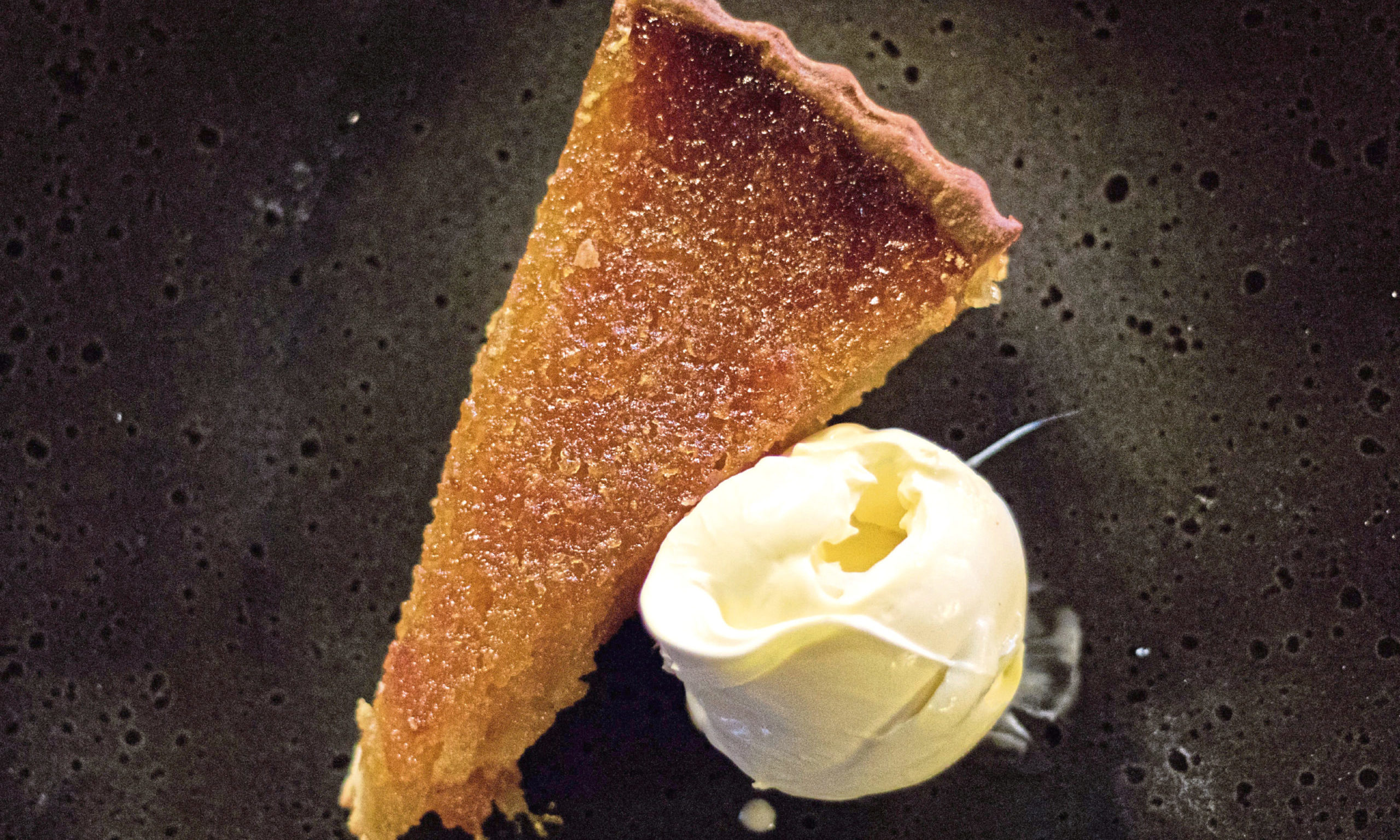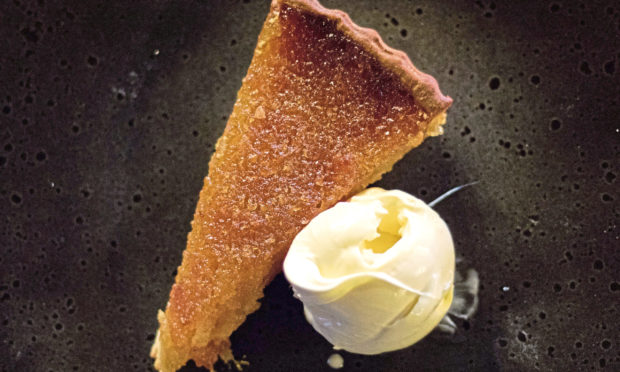Martin Hollis is the executive chef at the Old Course Hotel in St Andrews and regularly writes for The Courier’s food and drink magazine, The Menu.
At this time of year, warming comfort food served in the dark cold evenings is sure to be a winner, and will also go down well over the festive season.
With a long history, people have been enjoying a version of this treacle tart recipe since the 17th Century, when it was made with treacle rather than golden syrup.
I find using brioche breadcrumbs gives the dish, which serves eight, an extra level of sweetness.
For the sweet lemon pastry you’ll need: 300g unsalted butter, very cold and cut into cubes; 500g plain flour; 2 tsp finely grated lemon zest; 200g icing sugar; 1 egg lightly beaten and 50ml cold milk.
For the filling you’ll need: 4 eggs; 1 lemon finely, grated and juiced; 550ml golden syrup; 450ml double cream and 150g brioche crumbs.
Pulse the butter and flour in a food processor for one minute, add the icing sugar and lemon zest then process for a further 10 seconds.
To the mixture, add the beaten egg and slowly add the milk, processing until it forms a ball. Be careful not to overwork the pastry at this point.
Wrap in cling film and allow to rest for 30 minutes. Then after greasing, line the pastry tart mould with the dough and allow to rest in the fridge or freezer for one hour.

Apply parchment on top of the pastry case and fill with baking beans. Bake for 15 minutes in a preheated oven at 180°C/Fan 160°C/350°F/Gas Mark 4.
Remove the beans and paper before returning the tray to the oven for a further 10 minutes, until the pastry case is an even golden colour, then remove and set aside.
For the filling set the oven to 160°C/Fan 140°C/315°F/Gas Mark 2.5.
Whisk the eggs, lemon zest and juice for 30 seconds, then add the golden syrup and cream, whisking until the mixture emulsifies. Add the brioche crumbs and mix well before pouring into the precooked pastry case. Place in the oven and cook for around 35 minutes. The tart will be ready when the filling has turned golden and slightly risen.
Give the tart a shoogle – it show have a slight wobble but show no sign of being uncooked, and enjoy!
More in this series…
This Ecclefechan tart recipe is a real crowd pleaser and a great alternative to mince pies


